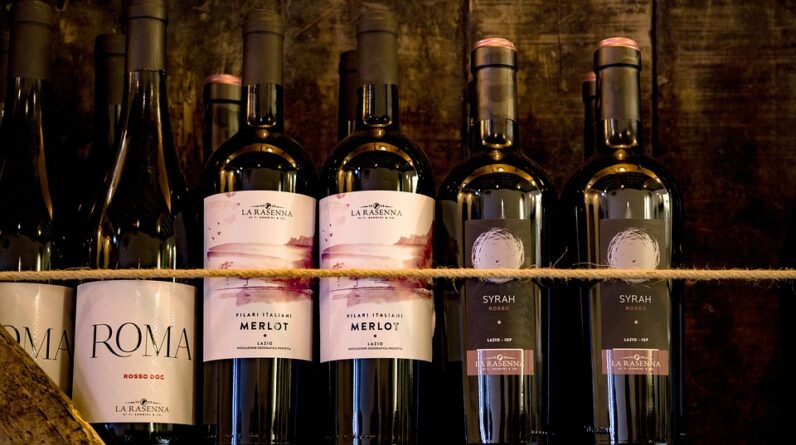In this mouthwatering article, we will guide you through the art of cooking Braciolone – a delectable Italian dish consisting of large rolled and stuffed beef or pork steak. Bursting with flavors, this hearty dish is often filled with breadcrumbs, cheese, and herbs, before being expertly braised or grilled to perfection. Whether you’re a seasoned chef or a novice in the kitchen, our detailed recipe will ensure that you can recreate this culinary masterpiece with ease, right in the comfort of your own home. So grab your apron, sharpen your knives, and let’s embark on a gastronomic adventure as we unravel the secrets of cooking Braciolone!

Choosing the Right Cut of Meat
When it comes to making braciolone, a large rolled and stuffed beef or pork steak, choosing the right cut of meat is crucial to ensure a delicious outcome. Both beef and pork can be used for this dish, so you have the freedom to choose based on your personal preference and taste.
For beef braciolone, cuts like flank steak, top round, or sirloin are excellent choices. These cuts are not only flavorful but also have enough marbling to keep the meat moist during the cooking process. If you prefer pork braciolone, cuts like pork loin or pork shoulder work well. These cuts are known for their tenderness and ability to absorb flavors.
Consider the level of tenderness you desire in your dish when selecting a cut of meat. For a more tender braciolone, opt for cuts that are naturally tender, such as beef tenderloin or pork tenderloin. These cuts require less cooking time and are perfect for those looking to save some time in the kitchen.
Additionally, consider the thickness and size of the meat. Thicker cuts will require longer cooking time, while thinner cuts will cook more quickly. Keep in mind that thicker cuts may also be more challenging to roll and secure, so it’s important to choose a cut of meat that is suitable for your cooking skills and preferences.
Preparing the Meat
Before you can begin the process of assembling and cooking your braciolone, it’s important to properly prepare the meat. This involves trimming any excess fat and connective tissue from the cut, tenderizing the meat, and creating a flat steak to facilitate the rolling process.
Start by trimming any visible fat from the meat. Excessive fat can affect the texture and flavor of the dish, so it’s best to remove it. Additionally, trim away any tough connective tissue that might be present. This will ensure that the meat remains tender and easy to eat once cooked.
Next, tenderize the meat to further enhance its tenderness. Using a meat mallet or a rolling pin, gently pound the meat, focusing on the thicker parts, to break down the muscle fibers. This will result in a more tender and juicy braciolone.
To create a flat steak, carefully slice the meat horizontally, almost all the way through, until you have a large, even piece of meat that can be easily rolled. Be cautious not to cut all the way through, as you want the steak to remain intact for the rolling process.
Preparing the Filling
One of the highlights of braciolone is the flavorful filling that is rolled up inside the steak. When preparing the filling, it’s important to choose ingredients that complement the meat and add depth of flavor.
Start by selecting the filling ingredients based on your taste preferences. Traditional options include breadcrumbs, cheese, and herbs such as parsley, basil, or oregano. These ingredients not only add texture but also enhance the overall taste of the dish.
In a bowl, combine the breadcrumbs, cheese, and herbs, and mix them well. The breadcrumbs act as a binding agent, helping to hold the filling together. The cheese adds richness and creaminess, while the herbs infuse the filling with aromatic flavors.
Feel free to get creative and add additional ingredients to the filling to suit your taste. You can incorporate ingredients like cooked spinach, sun-dried tomatoes, or even sautéed mushrooms to add a unique twist to your braciolone. Experiment with different combinations and flavors to find your perfect filling.
Assembling the Braciolone
Now that you have prepared both the meat and the filling, it’s time to assemble the braciolone. This process involves laying out the flattened steak, spreading the filling evenly across the surface, and rolling and securing the steak to create the characteristic roll.
Start by laying out the flattened steak on a clean surface. Ensure that the steak is positioned with the grain running horizontally, as this will make it easier to roll and slice later on.
Next, spread the filling evenly across the surface of the steak, leaving a small border around the edges to prevent the filling from spilling out during the cooking process. Use the back of a spoon or your hands to press the filling gently into the meat, ensuring that it adheres well.
Carefully roll up the steak, starting from one end and rolling tightly until you reach the other end. Secure the roll with kitchen twine or toothpicks, ensuring that it holds its shape during cooking. Trim any excess twine or toothpicks if necessary.

Cooking Methods
There are various methods you can use to cook your braciolone, depending on the flavor profile you desire and the equipment available to you. Whether you prefer a tomato-based sauce or a smoky, grilled flavor, there is a cooking method suitable for everyone’s taste.
Braising in a Tomato Sauce
Braising braciolone in a flavorful tomato sauce is a popular and traditional cooking method. The tomato sauce infuses the meat with rich flavors while keeping it moist and tender. Start by searing the braciolone on high heat to develop a nice crust. Then, add tomatoes and liquid such as broth or wine to the pot, cover, and simmer over low heat until the meat is tender.
Grilling for a Smoky Flavor
Grilling braciolone gives it a delicious smoky flavor and a slightly charred exterior. Preheat your grill to medium-high heat and grill the rolled steak, turning occasionally, until it reaches the desired internal temperature. Basting the braciolone with a marinade or sauce while grilling can add even more flavor.
Oven Roasting for Tender and Juicy Results
Oven roasting is another popular cooking method for braciolone as it ensures a tender and juicy result. Preheat your oven to the appropriate temperature and roast the rolled steak on a baking sheet or in a roasting pan until cooked to perfection. Using a meat thermometer will help you determine the doneness of your braciolone.
Braising the Braciolone
Braising braciolone is a cooking method that combines both dry and moist heat, resulting in tender and flavorful meat. Here’s a step-by-step guide on how to braise your braciolone:
- Sear the braciolone on high heat: Heat a large, oven-safe pot or Dutch oven over high heat. Add a tablespoon of oil and sear the braciolone on all sides until browned. This will help develop a rich crust and enhance the flavor.
- Adding tomatoes and liquid: Once the braciolone is seared, reduce the heat to medium and add crushed tomatoes, tomato sauce, or diced tomatoes to the pot. Add enough liquid such as beef or vegetable broth, red wine, or water to cover the braciolone partially.
- Simmering and braising: Bring the liquid to a simmer, then cover the pot and reduce the heat to low. Allow the braciolone to simmer gently for several hours, or until the meat is tender and the flavors have melded together. Check the pot occasionally and add additional liquid if needed.
Braising the braciolone in a tomato sauce will infuse the meat with the flavors of the sauce, resulting in a savory and tender dish. Serve the braciolone with the flavorful tomato sauce spooned over the top.
Grilling the Braciolone
Grilling braciolone adds a unique smoky flavor and attractive grill marks to the dish. Follow these steps to grill your braciolone to perfection:
- Preheating the grill: Preheat your grill to medium-high heat. Make sure the grates are clean and lightly oiled to prevent the meat from sticking.
- Grilling the rolled steak: Place the rolled braciolone directly on the preheated grill grates. Cook for about 15-20 minutes, turning the braciolone every 5 minutes to ensure even cooking and grill marks on all sides.
- Achieving the desired internal temperature: Use a meat thermometer to check the internal temperature of the braciolone. Aim for an internal temperature of 145°F (63°C) for medium-rare, 160°F (71°C) for medium, or 165°F (74°C) for well-done.
Grilling the braciolone will give it a smoky flavor and a slightly charred crust. Allow the braciolone to rest for a few minutes before slicing to allow the juices to redistribute within the meat.
Oven Roasting the Braciolone
Oven roasting braciolone is a simple and reliable method that ensures a tender and juicy result. Here’s how to roast your braciolone in the oven:
- Preheating the oven: Preheat your oven to the appropriate temperature, usually around 375°F (190°C).
- Roasting the rolled steak: Place the rolled braciolone on a baking sheet or in a roasting pan and place it in the preheated oven. Roast for approximately 25-30 minutes per pound, or until the internal temperature reaches your desired level of doneness.
- Using a meat thermometer: To avoid overcooking or undercooking, use a meat thermometer to check the internal temperature. For medium-rare, aim for 145°F (63°C), for medium 160°F (71°C), and for well-done 165°F (74°C).
Oven roasting the braciolone will result in a tender and juicy steak with a beautifully browned exterior. Allow the braciolone to rest for a few minutes before slicing to retain its juices.
Serving and Garnishing
Once your braciolone is cooked to perfection, it’s time to serve and garnish it for an enticing presentation. Follow these steps to showcase your culinary creation:
- Slicing the Braciolone: Using a sharp knife, carefully slice the braciolone into even, round pinwheels. This will allow the filling to be displayed beautifully.
- Arranging on a Platter: Place the sliced braciolone pinwheels on a large serving platter, arranging them neatly in a single layer.
- Garnishing with Fresh Herbs or Sauce: Add a finishing touch to your braciolone by garnishing it with fresh herbs like parsley or basil. Alternatively, you can drizzle some of the cooking sauce or a complementary sauce over the top for added flavor and visual appeal.
Serving the braciolone on a platter not only makes it visually appealing but also allows your guests to easily serve themselves. Accompany it with some crusty bread, a side salad, or roasted vegetables for a complete meal.
Tips and Variations
Making braciolone offers a lot of room for creativity and personalization. Here are some tips and variations to consider when preparing this delicious dish:
Using Different Fillings and Seasonings
Don’t be afraid to experiment with different fillings and seasonings. You can try using different types of cheese, like mozzarella or Parmesan, or substitute breadcrumbs with crushed crackers for added crunch. Additionally, you can incorporate various seasonings, such as garlic powder, paprika, or red pepper flakes, to create different flavor profiles.
Adding Vegetables or Prosciutto for Extra Flavor
To add even more flavor to your braciolone, consider adding vegetables or prosciutto to the filling. Sautéed mushrooms, wilted spinach, or roasted red peppers can all be delicious additions. You can also wrap the steak in thin slices of prosciutto before rolling it for an additional layer of savory goodness.
Adjusting Cooking Time and Temperature
Cooking time and temperature may vary depending on the thickness and size of the braciolone, as well as personal preferences for doneness. Use a meat thermometer to ensure that the meat reaches the desired internal temperature without overcooking it. Remember to adjust the cooking time based on the weight of the rolled steak and monitor the meat closely to achieve the perfect result.
With these tips and variations in mind, you’re ready to embark on your braciolone-cooking adventure. Get creative, have fun, and enjoy the process of making this classic Italian dish right in your own kitchen!










